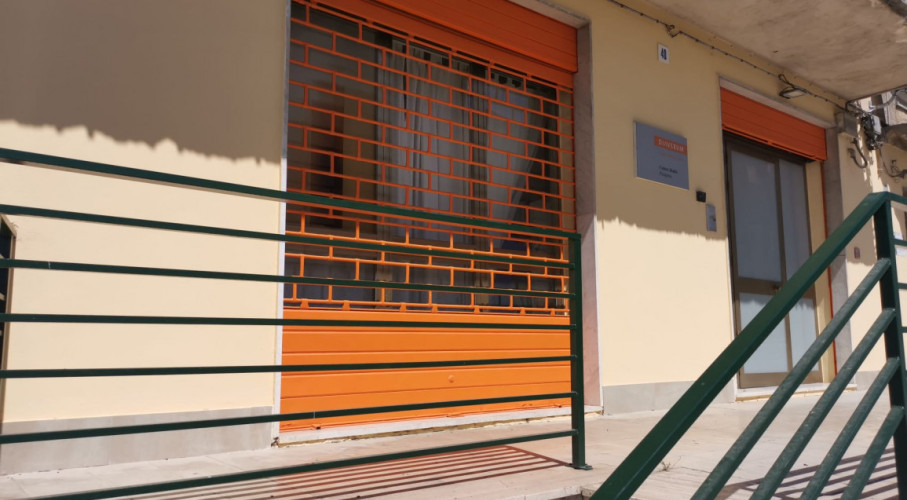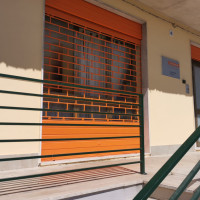
Diaverum Centro Rene di Palagonia
Via Palermo, 40, 95046 Palagonia, Italy
About the Clinic
Accepting
Our experienced clinic team welcomes you to DIAVERUM PALAGONIA. In our clinic we offer excellent medical service as well as a warm and friendly atmosphere to revitalise our patients both physically and emotionally.
DIAVERUM PALAGONIA was inaugurated in 1983 and features 13 dialysis reclining chairs. All stations are equipped with TV screens and free Wi-Fi.
We offer our patients additional clinical assistance services such as cardiological, nutritional, oncological consulting, etc.. and we take care of our patients supporting administrative activities with ASP of Catania.
As an integral part of our service we offer free meals, coffee, and tea for our patients.
Free public parking is available adjacent to the clinic.
Patient Transport Service: for all patients outside the Region, whose transport is not managed by the Region of Sicily, it is possible to organize, subject to acceptance of the estimate paid by the patients, transfers with an affiliated transport association.
Visit Sicily
And God created Sicily…Visit a unique place of art, archaeology, folklore. And breath and feel the heritage of Archimedes and Saint Paul. Of course, the excellent and healthy Mediterranean food is also a remarkable pro to take a refreshing vacation in this part of Italy. This fantastic island will create moments to remember!
CITY OF PALAGONIA
Palagonia, a large town in the province of Catania, of which it dominates the immense and luxuriant plain; is one of the capitals of the red pulp Orange. City whose historical origins sink into the mists of time, to lead us into a world populated by myths and legends. The toponym derives from the Greek "Palicanea", or "new Palica" and refers to the new settlement that replaced the ancient Palica, founded, according to tradition, in the fifth century BC. C. da Ducezio near the pre-existing one dedicated to the cult of the Palici, and subsequently created. The discovery, in the municipal area, of caves and shelters attests to the presence of numerous Christian communities that have settled near the town since the early Middle Ages.
To visit:
-Rocchicella (today in the territory of Mineo), rises in the Margi Valley. Site of great archaeological interest, seat of ancient human interest since remote antiquity (12,000 / 10,000 years BC), as well as a receptacle for the cult of the Palic deities (personification of the bubbling lakes Naftia). It is mentioned by Greek and Latin classical authors as the seat of both the famous sanctuary of the Palici and the city of Paliké. To visit the remains of the Estaterion and the Museum of archaeological finds found on the site.
- Early Christian Basilica of San Giovanni. It is a singular construction of which the apse and some columns are preserved, datable to the 7th century AD. Very small, it was not very suitable to contain the faithful, so much so that it is hypothesized that they would attend religious functions from the outside. The church did not have real side walls but a light curtain of arches inside which doors were inserted that managed during the functions. Some documents from the mid-16th century inform us of his belonging to the Order of the Knights of St. John of Jerusale.
-Oratory of Coste di S. Febronia. The Byzantine oratory is a small church entirely carved into the rock which dates back to the 6th-7th century, has an almost square plan with two altars; one of them, inserted in a niche obtained in the frescoed wall with a Christ Pantocreator surrounded by a (later) Annunciation, while in the walls of the second altar, there are paintings of the martyrdom of Santa Febronia, the martyrdom of San Bartolomeo, a figure of bishop (perhaps S. Gregorio Magno), a Santa Lucia, a fresco with Adam and Eve, Santa Anastasia. The roof is decorated with embossed lace, and there are traces of some holes where lighting fixtures were hung. A pit was dug in the floor for baptism by immersion, which was subsequently transformed into a drying room.
-Pozzo Blandini. With the planting of citrus groves, already existing at the end of the sixteenth century, wells were dug to find the water necessary to cover the summer needs. Structures were built around the wells, such as the Blandini well which, over six meters high, dominates the surrounding plain. Outside the well there was an ingenuity, a "noria", operated by animals to raise the water
CITY OF CALTAGIRONE
Under the Arab rule the town took the name of Qal ‘at al Gharùn meaning “Fortress of Jars” referring to the clay process.
The local artisans had the luck to get the raw material directly from the clay caves and to collect the firewood for their furnaces from the near wood Santo Pietro, so they quicly became the most important ceramics producers of the Island.
The pottery decorums seem to be inspired to the splendid art of weaving and to the Sicilian embroidery.
The city has lots of attractions that capture the visitor’s gaze at every corner: the wonderful Public Gardens, the smart noble palaces. In the historic center there is the great central Square, once called Malfitania, where we find the former Senatorial building and the former Theater Garibaldi, today known as Sturzo Gallery and the old Monte di Pietà (pawnshop).
Caltagirone has a rich culinary tradition famous for its typical sweets, linked to the traditional festivals, such as cuddureddi (honey , almonds or mulled wine biscuits) ore the ancient bread and egg pans and the cubaita of chickpeas, some true, Baroque architectures.
Mount Etna – Europe´s greatest natural wonder
Mount Etna is a living, sacred mountain of legend and myth. Sicily´s highest mountain has a height of approximately 3.300 meters. When considering an excursion, you should – even in warm summer days – be prepared to discover snow on its top.
Catania is the city where the mountains meet the sea. Experience golden coasts with orange and lemon orchards. Learn about different cultures and how they influence past and presence of Sicily, by i.e., taking an excursion to the historic Greek amphitheatre in Taormina.
CITY OF CATANIA
Catania is the region where the mountains meet the sea. Experience golden coasts with orange and lemon orchards. Learn about different cultures and how they influence past and presence of Sicily, by i.e. taking an excursion to the historic Greek amphitheatre in Taormina
“Bedda” is the Sicilian word for “beautiful” – and this is exactly how this fantastic region should be described.
CITY OF ACIREALE
The Carnival of Acireale (Catania) is one of the most ancient of Sicily. The first Grotesque floats were built in 1880, and this old tradition has been kept alive, thanks to the expert and willing local artisans that convey all of their imagination and know-how in the creation of their artistic floats. The most characteristic mask was very likely the abbatazzu (the abbot) or poet minutizzu (a poet) that mimed the nobles and the clergy bringing around a lousy book, pretending to pronounce satirical and mocking sentences
“Bedda” is the Sicilian word for “beautiful” – and this is exactly how this fantastic region should be described.
Facilities
Available Treatment Days
Opening Hours
| Monday | 06:30 - 18:30 |
| Tuesday | 06:30 - 12:30 |
| Wednesday | 06:30 - 18:30 |
| Thursday | 06:30 - 12:30 |
| Friday | 06:30 - 18:30 |
| Saturday | 06:30 - 12:30 |
| Sunday | Closed |
Staff
Medical Director
Nicolosi, Giuseppe
Payment Options
Getting to the Clinic
Via Palermo, 40, 95046 Palagonia, Italy
